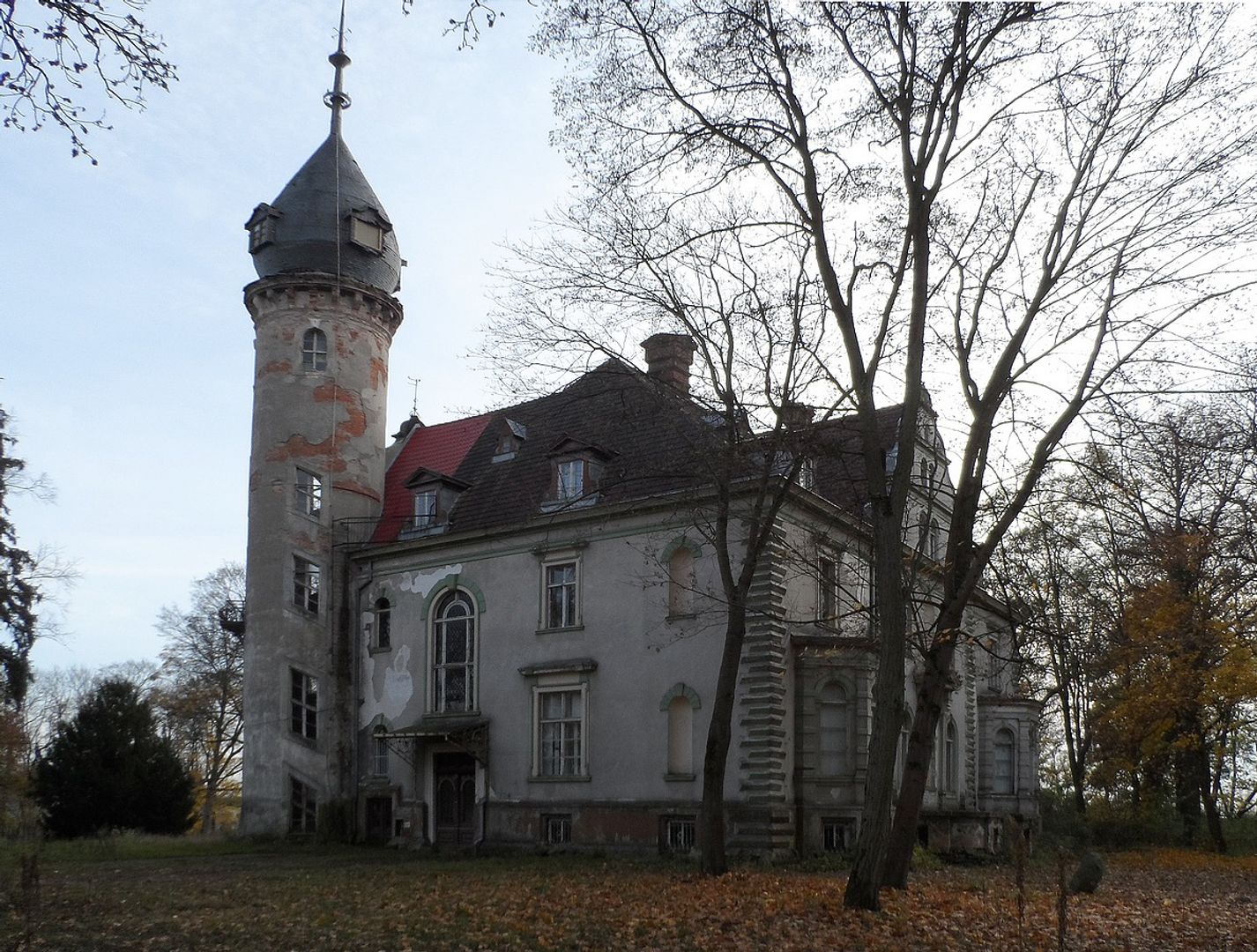Kruszewo Palace
6.76

Overview
The palace in Kruszewo, originally built around 1780 by Mikołaj Rafał Antoni Swinarski, existed as a simple, thatched building. The palace known today dates from the transformations of the 19th century, when Gideon von Wallenberg-Pachaly completed its construction in 1889, replacing the earlier structure. The building features an architectural style with six levels, a rectangular layout, and a tall cylindrical tower topped with an onion dome, set within a landscape park that borders the Notecka Wilderness. The history of the Swinarski family dates back to the Middle Ages, and their estate grew significantly thanks to Mikołaj Swinarski, who made numerous land purchases in Greater Poland. After his death, the estate passed to his descendants, and in the 19th century, Kruszewo became the seat of subsequent owners, including Count Karol Potulicki, who engaged in agricultural activities and implemented modern solutions. During World War II, the palace served various functions—from a transit camp to an NSDAP school and a gynecological clinic. After the war, the building was used for health purposes and later as an orphanage and a phthisiatric hospital. In 1995, the palace was returned to the Congregation of the Missionaries of the Holy Family, and since 1998, it has been privately owned. It is currently managed by commercial companies, including the Medical Cooperative. An interesting fact is that Kruszewo was the site of the development of the Swinarski family's estate structure, and their history is linked to important events in Poland, such as the January Uprising, in which family members were involved. Thus, the Palace in Kruszewo is not only a valuable architectural monument but also a key site in local history and culture.
Location
2025 Wizytor | All Rights Reserved